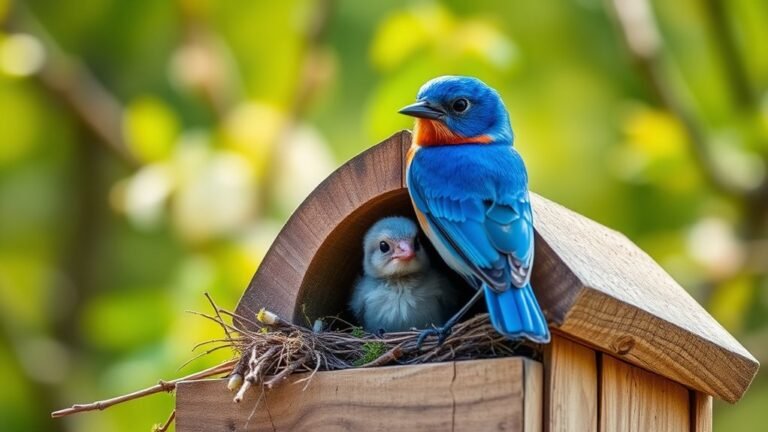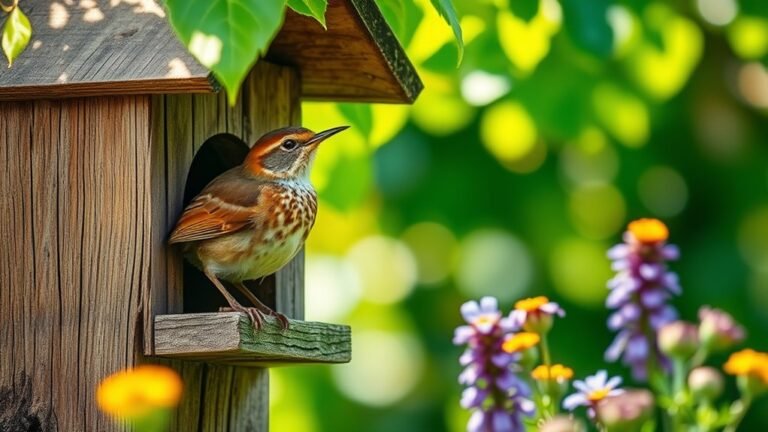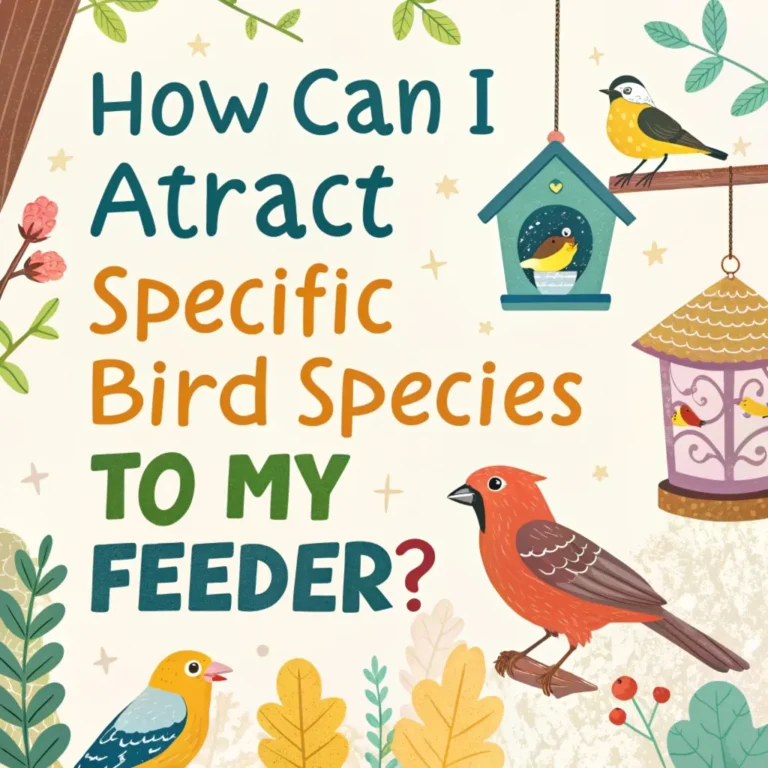Birds That Make Nests Shaped Like a Hive: Ingenious Architects
When you watch birds build nests that look like beehives, you can appreciate their building skills. These nests, made of twigs, grass, and mud, show how well they work together. Each section of the nest protects their young and supports the community. However, there is more to these nests. What motivates their nesting habits? How do these habits help them survive?
Key Takeaways
Weaverbirds build hive-shaped nests from grasses and reeds. These nests show their skills in construction and teamwork.
Sociable weavers create large, igloo-like nests. These structures reflect cooperation and specialization within their colonies.
Honeyguides do not build their own nests. Instead, they use old woodpecker holes, demonstrating their adaptability and resourcefulness.
Hive-shaped nests support young birds and help strengthen social bonds between species.
Environmental changes threaten nesting habitats. This loss impacts the survival of these clever bird builders.
The Fascinating World of Hive-Shaped Nests

In bird architecture, hive-shaped nests stand out for their unique structure.
These nests showcase impressive building techniques and clever use of materials. Birds create these nests using twigs, grasses, and mud, often resembling honeycomb patterns.
Watching birds collect these materials invites a deeper connection to their world. Each nest provides shelter and reflects communal effort and the natural instinct for belonging.
This fascinating aspect of nature highlights the skill and creativity of birds as they construct these remarkable homes.
The Weaverbird: Nature's Knotting Expert
Weaverbirds are known for their unique nest-building skills. They create impressive nests that look like hives. These birds gather grass, reeds, and other materials to build strong, secure nests. Their ability to weave and tie materials together shows their skill and creativity.
A single nest can have multiple chambers, which offer safety for their chicks and serve as shared spaces for the flock. Watching these birds build their nests highlights their teamwork, which helps them survive and strengthens their relationships.
The Honeyguide: A Unique Nesting Strategy

The honeyguide bird uses a unique nesting strategy. Unlike weaverbirds, which build intricate nests, honeyguides prefer old woodpecker cavities. This choice helps them survive by providing ready-made homes.
By using these existing sites, honeyguides show their resourcefulness and adaptability. They rely on the work of other birds to find shelter. This behavior illustrates how different species can work together in nature.
Their cleverness and ability to adjust to their environment make honeyguides truly fascinating creatures. This insight into their lives can deepen our appreciation for the natural world and its interconnectedness.
Sociable Weaver: Building Communities in the Sky
The sociable weaver builds large nests in southern Africa, creating vibrant communities among the arid landscape. These birds live in colonies that can include hundreds of individuals.
They construct nests from grass and fibers, forming structures that look like large igloos. Each bird plays a role in maintaining and expanding the nest, highlighting their strong sense of community.
Their cooperative behavior helps them survive harsh conditions together. By creating these nests, sociable weavers demonstrate the strength and importance of working together in challenging environments.
The Baya Weaver: Crafting Elegance

The Baya Weaver is known for its bright colors and skilled nest building. Male Baya Weavers create woven nests using long grass strands. These nests serve important functions, providing safety and attracting females.
- Males build large, hanging nests to impress females.
- Nests have several rooms for nesting and resting.
- The construction reflects the weaver's ability and creativity.
Watching the Baya Weaver can be a delightful experience, as their intricate work highlights their unique talents in nature. Each nest symbolizes their effort and dedication, making them fascinating birds to observe.
Long-Tailed Tit: Cozy and Compact Homes
Long-Tailed Tits are small birds known for their friendly nature and cute appearance. They build nests that look like soft, woolly balls in trees.
These birds gather soft materials such as feathers, moss, and spider silk to make their homes cozy and snug. Their nests are well-crafted, showcasing their skills in building.
Many Long-Tailed Tits work together during nest construction, which fosters strong social ties among them. This teamwork not only helps them build safe nests but also strengthens their community.
The warmth and shelter of these nests create a sense of unity, making Long-Tailed Tits true symbols of togetherness in the bird community.
The Red-Billed Quelea: The Great Nest Builder
The Red-Billed Quelea is known for its impressive nesting skills. These birds build nests in large groups, using woven grass to create structures that provide safety and warmth.
Key features of their nesting process include:
- Colony Dynamics: Quelea colonies can include thousands of birds. They work together effectively.
- Nest Structure: Their nests are strong. They protect the young from bad weather.
- Social Interaction: Working together helps to build bonds among the birds. This fosters a sense of community.
The Red-Billed Quelea showcases both remarkable building abilities and strong social connections. Their nests aren't just safe havens; they also represent the importance of community and togetherness.
The Golden-Crowned Kinglet: A Tiny Architect
The Golden-Crowned Kinglet is a small bird that showcases impressive building skills.
These birds create intricate nests, highlighting their talent as architects. In coniferous forests, they collect spider silk, moss, and feathers to build cup-shaped nests.
These nests are often hidden among the branches and provide safe spaces for their young. Observing the Kinglet as it moves around will show you the effort it puts into nest construction.
The Cactus Wren: Adapting to Harsh Environments
The Cactus Wren is an excellent example of adaptation to tough environments.
These birds live in dry deserts and show important adaptations for survival. They build intricate nests in cactus spines, which helps protect them from predators.
Their lifestyle provides clear lessons on how to survive in deserts, such as:
- Using natural materials for shelter
- Building nests that reduce extreme heat and cold
- Finding food efficiently in sparse areas
Cactus Wrens demonstrate resilience and creativity in challenging habitats, making them fascinating creatures to observe.
Their ability to thrive in harsh conditions highlights the clever ways animals can adapt to ensure their survival.
Ecological Benefits of Hive-Shaped Nests
Hive-shaped nests, made by social birds, offer important ecological benefits.
These nests provide safe spaces for eggs and young birds. Their communal nature fosters cooperation, helping birds build strong social bonds and share protection. The structure of these nests creates a stable microclimate, shielding inhabitants from harsh weather.
These nests also attract insects, which can serve as food or help recycle nutrients in the ecosystem. Moreover, abandoned nests can benefit other species, enhancing biodiversity in the area.
Observing hive-shaped nests reveals the connected relationships that support our ecosystem, showing the vital role each species plays.
Conservation Challenges for Nest-Building Birds
As cities grow, many nest-building birds face serious threats that impact their survival. One major issue is habitat loss. More natural areas are being replaced by buildings and roads, leaving birds with fewer nesting sites.
Climate change also affects these birds by changing migration patterns and breeding times. Additionally, urban environments often increase risks from predators, such as domestic cats and invasive species.
Key impacts include:
- Loss of habitat leads to fewer places for nests.
- Climate change affects food sources and living conditions.
- More predators pose greater threats in crowded areas.
We must take action to protect these incredible birds. Their presence is important for biodiversity and maintaining healthy ecosystems. Ensuring their survival is a responsibility we all share.
Frequently Asked Questions
What Are the Primary Materials Used by These Birds to Build Nests?
Birds collect materials to build their nests using resources found in their surroundings. They gather items like twigs, leaves, and mud. Watching them as they construct their nests shows how they adapt to their environment to survive. These actions reflect their skill in using local materials for shelter.
How Do Predators Influence the Design of Hive-Shaped Nests?
Predators influence nesting behavior. Hive-shaped nests help avoid predators. These designs hide young animals, reducing threats. This setup promotes safety and community, which are vital for survival.
Do Hive-Shaped Nests Provide Any Specific Climate Benefits for Birds?
Hive-shaped nests help birds adapt to climate changes. These nests provide good thermal regulation. They protect birds from extreme temperatures and keep their living spaces stable. This design showcases nature's creative solutions. It fosters a deeper connection between birds and their environment, making it fascinating to observe.
Are There Any Similar Nesting Strategies in Other Animal Species?
Termites and wasps share similar nesting strategies. Termite mounds help regulate temperature and humidity. Wasp nests provide safety for the colony. Both examples show how animals improve their homes for survival and community. This adaptation highlights their instinctual drive to create suitable living conditions.
What Role Do Chicks Play in Nest Construction and Maintenance?
Chicks help their parents with nest work. They make small adjustments to the nest. This activity allows chicks to learn important skills. It also builds stronger family bonds. By working together, they enhance their chances of survival. Their participation promotes a sense of community within the family.

Ava is a bird enthusiast and nature lover who has spent countless hours observing and learning about the fascinating world of birds. With a passion for sharing her knowledge and inspiring others to appreciate the beauty of birds, Ava writes about her experiences and insights on avianadmirer.com.







